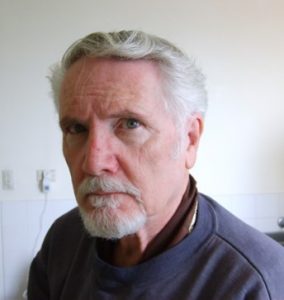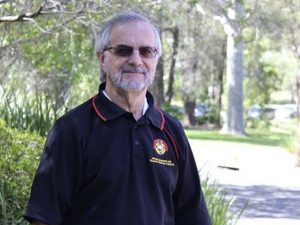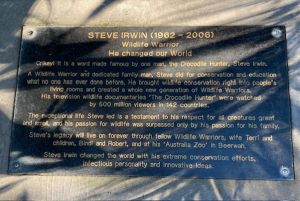The Historical Jesus is not The Christ
Thanks (Rev) Rex Hunt for forwarding this paper from David Galston for circulation through the UCFORUM.

David Galston is the Executive Director of the Westar Institute and a Scholar of Westar. David has a B.A. from the University of Winnipeg, a M.Div. from Vancouver School of Theology, and a Ph.D. from McGill University in the Philosophy of Religion. He is the author of three books, Archives and the Event of God (McGill-Queens Press, 2010), Embracing the Human Jesus (Polebridge Press, 2012), and God’s Human Future (Polebridge Press, 2016).
Rex A. E. Hunt is an Australian ‘grass roots’ religious naturalist , social ecologist, and progressive liturgist.
Since the publication of David Friedrich Strauss’s The Life of Jesus, Critically Examined in 1835,
there has been a controversy involving the separation of Jesus as a historical figure from the Christ as a Christian confession. To put it plainly, since Strauss, the Jesus of history and the Christ of faith have been regarded as two different animals.
It is natural, and expected, that the church has never been happy with this separation. The historical Jesus is not the Christ, and so to affirm that the historical Jesus is important is equal to saying that the church’s history of Christ-confession has been misplaced. It is hard to imagine that the church could be happy with such a conclusion.
However, even historians and, especially, theologians are often unhappy with the historical Jesus. Christian beliefs that an historian holds and will defend can lie hidden behind the examination of history. It is the hidden nature of these beliefs, precisely because they are hidden from view, that makes it difficult to judge whose version of the historical Jesus has truly satisfied the criterion of objectivity. I want to look at a few ways the significance of the historical Jesus is surprisingly denied and suggest that this denial prevents the church and Christianity from moving forward into a new age for religion.
The first tactic used to deny the significance of the historical Jesus is obfuscation. This is really a
classic move that politicians use all the time. To obfuscate is to blur the picture, which makes a
question obscure and then confusing, such that by the time the politician finishes crafting an answer, everyone has forgotten what the question was. Obfuscation avoids a question, and avoidance allows for the status quo to continue.
While David Friedrich Strauss did not really know who the historical Jesus was, he was extremely thorough in indicating who Jesus was not. Jesus was not the Christ, the Son of the living God, and, he stated, the gospel writers “flattered” themselves when they reported mythic narratives as historical events. Strauss imagined that Jesus was some sort of prophetic personality. He did not have the tools developed later in biblical criticism to go much further, but he had enough sense to identify storytelling when he saw it.
Later theologians and historians took advantage of this uncertainty in Strauss. The popular
conclusion was that we can’t know anything about the historical figure, so we must go forward with the post-resurrection Jesus, the Jesus of the church, and find ways to make the confession about Jesus as the Son of God relevant for today. In other words, the more we can hide Jesus behind the confession of the Christ, and the more we can make the Jesus of history irrelevant, the more we can continue on with the same old story. Hidden inside academic obfuscation was a commitment to maintain the ancient doctrines of the church.
A second way to deny the importance of the historical Jesus is the use of jargon. Insider language is jargon language; it is the language specialists use with each other to impress their colleagues and to make the public believe that they know what they are talking about. It is possible to do good academic work, or any form of technical work, in everyday language that avoids jargon and includes the public. However, in the competitive marketplace of ideas, being identifiably in the know is important for tenure, for status, and for coolness. The study of postmodern philosophy is full of “cool” expressions that sound profound but mean something simple. A “signification matrix,” for example, just means “community.”
Theologians use jargon to talk about the Christ within the technical problems of theology. The
problems of theology are explained with obscure insider words like soteriology, Christology, analogia fidei, Docetism (there is nothing worse than being accused of Docetism!), perichoresis, and other (strange) words usually unfamiliar to the uninitiated. The problem with using theological jargon in relation to the historical Jesus is that the historical Jesus eliminates the need for jargon. The jargon goes with the Christ either to talk about the work Christ accomplishes or the identity Christ holds as the Son of God. Once you no longer have a “Son of God” to play with, there is no purpose to the jargon.
Both the techniques of obfuscation and the reliance on jargon form, in large measure, the history of Christian doctrine. The historical Jesus does not have such a history; only Jesus as the Christ composes the history of Christian belief. The shock value of the historical Jesus, regardless of how one approaches the question, lies in the simple truth that Jesus was a human being like anyone. The Jesus of history does not hold the confessed Son of God status that Christianity has given him. He was, like all of us, a human being who was right sometimes and wrong at other times. Giving back to Jesus his humanity requires, on the part of later generations like us, a certain act of generosity and, even, humility toward him. Accepting Jesus as a human being, not a Savior or a God, is the sincere act of loving him both as he was and for who he was. People who hold this respectful quality of love for Jesus are, amazingly, not welcome in the church.
A future for a religion like Christianity with an historical Jesus is a humanist future. This future does not involve a loss of respect for Jesus; indeed, quite the contrary, it involves an honest love for him. Second, it is a future that is not built upon confessing theological doctrines. The historical Jesus eliminates this need, which is tied to the Christ. The historical Jesus is not a confession but a person. Equally, the historical Jesus, by virtue of being a human being who lived, struggled, and lost in the Roman empire, requires of us not a belief in him but a commitment to the struggles, the gains, and the losses of our own time. The historical Jesus impels us to be “historical” too, that is, to be our true human selves in our time with the same honesty, the same realism, but also the same hope.
A future Christianity with the historical Jesus is a humanist Christianity that remains “spiritual”
because it remains in the present moments of history with honesty. There is no attempt at
obfuscation, and there is no need to employ jargon. What is needed, and what is honest, is our own humanity, living on this planet as creatures respectful of nature, committed to our common future. Without the honesty that such a commitment requires, we do forfeit our sense of spirituality, and we do settle for obfuscation over clarity and for jargon over community.
–© David Galston
oOo












